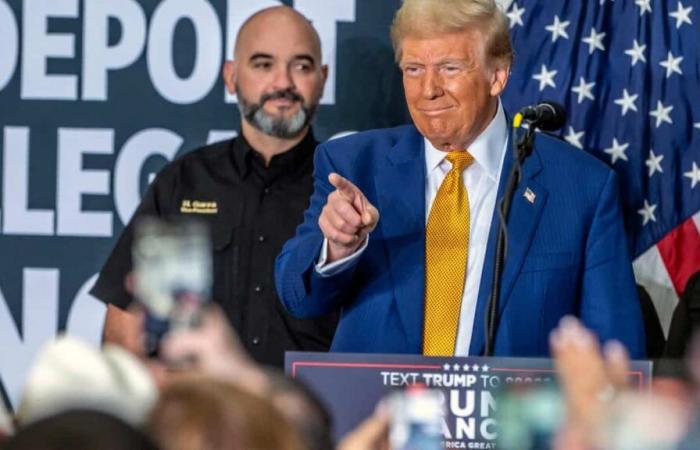This is the most dizzying of his campaign promises: to launch the largest operation to deport illegal immigrants in American history. But Donald Trump’s project risks encountering a cascade of economic and legal problems.
• Also read: Return of Trump: what impacts for the Quebec economy?
• Also read: Here’s who will be part of Donald Trump’s future administration in the White House
“The speech is one thing and the application is another,” asserts Stephen Yale-Loehr, professor of immigration law at Cornell University, while the number of illegal aliens in the United States is estimated at some 12 or 13 million.
Given the legal protections granted by the American Constitution to any person, regardless of their nationality, “Trump cannot simply arrest people and deport them the next day,” he explains to AFP.
Legal issues
Illegal immigrants must first be presented to a judge who will rule on their request to remain in the United States. However, “there is already a stock of 3.6 million backlogs in our immigration courts”, for around 700 judges, indicates Stephen Yale-Loehr.
“It would therefore be necessary to recruit thousands of new judges”, not to mention the immigration police agents (ICE) to arrest undocumented immigrants, the construction of new detention centers and the planes to deport them, he lists. -he.
“Just this bureaucratic apparatus necessary to try to carry out a mass expulsion project will take time and money on the part of Congress,” insists the specialist, doubting that even a Republican majority would be ready to spend dozens, or even the hundreds of billions of dollars required for an operation of this magnitude.
Economic problems
A study published in October by the NGO American Immigration Council estimates the overall cost at $88 billion per year, or $967.9 billion over more than a decade.
“A mass expulsion plan would be difficult to implement immediately in its entirety,” due in particular to this “dissuasive” cost, notes Nayna Gupta, policy director of the American Immigration Council.
But this will not be enough to convince the future administration to give it up, she believes, highlighting the declarations to this effect from officials of Donald Trump’s campaign in the hours following the announcement of his victory.
“This certainly means that he can take immediate measures to expel the most vulnerable undocumented people”, that is to say the approximately 1.5 million foreigners already targeted by final orders of expulsion and living under the supervision of immigration services, specifies Nayna Gupta.
“The immigration enforcement system can in many ways be decentralized,” relying on local immigration departments who would feel “encouraged and empowered by a presidency and speech of this type to find people whose they could immediately initiate eviction procedures,” she continues. “This could happen anywhere in the country.”
The army
In addition, Donald Trump could be tempted to “use the army to accelerate his mass expulsion plan” in order to compensate for the lack of federal immigration agents or local police, an option mentioned by some of his close friends. the most conservative, recalls the head of the NGO.
A use of military force for law enforcement operations would inevitably raise legal challenges.
The estimate of 88 billion per year only covers the direct costs of this plan, according to the American Immigration Council report.
Most economic studies expect large-scale expulsions of illegal aliens to result in a reduction in the workforce, particularly in certain sectors, and an increase in wages and inflation.
This would result, according to the NGO, in a reduction in United States GDP from 4.2% to 6.8%, comparable to the decline of 4.3% during the 2007-2009 recession.






